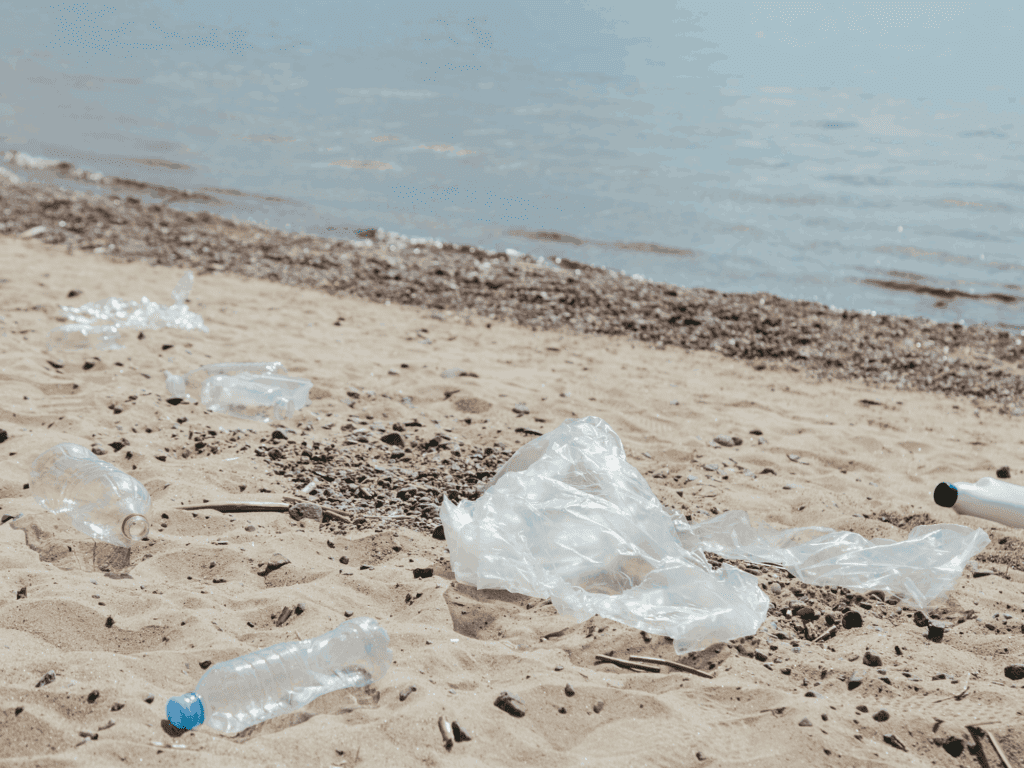In today’s world, convenience has inadvertently caused a silent, looming crisis – the microplastic epidemic. These minuscule plastic particles, smaller than a grain of rice, have stealthily infiltrated our food supply, water sources, and, consequently, our very bodies. This article explores the potential ramifications of microplastics on vital organs, including the brain, based on cutting-edge scientific research. It offers a solution for safeguarding against this threat – the Reverse Osmosis water system.
Unmasking the Unseen Threat of Microplastics
Microplastic Metamorphosis
Larger plastic items, such as shopping bags and water bottles, undergo gradual transformation into microplastics. Exposed to sunlight and water, plastics that evade waste management break down into microscopic dimensions.
Moreover, everyday items like cosmetics, synthetic fabrics, and single-use plastic bags release minute plastic particles into the environment. These tiny plastic fragments traverse through water, air, and the food chain until they eventually enter our bodies.
Alarming Statistics about Ingestion
In 2019, plastic production soared to a staggering 460 million tonnes, highlighting the magnitude of this issue. According to a 2019 analysis by the World Wildlife Federation, individuals unknowingly ingest around 5 grams of plastic per week, equivalent to the weight of a credit card. This paints a disquieting picture of the scale of plastic ingestion within the human population.

Microplastics’ Impact on Our Lives
Bottled Water and Microplastics
A study in 2018 uncovered a shocking statistic – 93 percent of tested bottled water samples contained microplastics. This revelation, as published in Frontiers in Chemistry, is particularly concerning due to the widespread consumption of bottled water, affecting individuals across demographics.
Microplastics: A Global Reality
Dr. Christopher Palmer, a Harvard professor, asserts that microplastics are virtually ubiquitous in our modern world. They are discovered everywhere, even in the most unexpected places, such as Mount Everest’s snow. Furthermore, a small-scale study detected microplastics in human placentas, emphasizing the alarming extent of exposure, with even children born today being affected.
Bloodborne Microplastics
Recent studies have raised the alarm further. Research conducted in 2022 revealed that a significant portion of individuals have detectable microplastics in their bloodstream. In a sample of 22 individuals, the majority showed microplastics in their blood, highlighting the pervasiveness of this issue.

Health Implications of Microplastics
Microplastics are not passive bystanders; they cause detrimental health effects. Plastic chemicals like phthalates and bisphenols are associated with obesity and diabetes. These conditions may be attributed to inflammation and hormone disruption, underscoring the intricate connection between microplastics and human health.
Surgery and Microplastic Intrusion
A pilot study in China in 2023, published in Environmental Science and Technology, discovered microplastics in heart tissue. The study, which analyzed blood samples from patients before and after cardiovascular surgery, revealed that invasive medical procedures could introduce microplastics into the bloodstream and organs.
Impacts of Microplastics Over Time
Beyond their physical intrusion, microplastics also carry harmful chemicals, including flame retardants, persistent organic pollutants (POPs), and plasticizers like BPA. These substances can disrupt hormonal balance and trigger chronic inflammation, threatening our health.
Research has demonstrated that microplastics accumulate in vital organs over time, potentially leading to long-term health consequences. In a study published in the International Journal of Molecular Sciences in 2023, microplastics were found in every major tissue. These tissues included the brain, liver, kidney, gastrointestinal tract, heart, spleen, and lungs.
Microplastics’ Penetration of the Brain
The brain, typically safeguarded by the blood-brain barrier, is not impervious to microplastics. An Austrian study in 2023, published in Nanomaterials, revealed that microplastics could infiltrate even this highly protected organ. Mice consuming water containing microplastics demonstrated rapid infiltration of these particles into their brains within just two hours.
Managing Microplastic Exposure
Despite the pervasive presence of microplastics in our environment, individuals can take steps to reduce their exposure:
- Choose Copper Water Bottles: Copper water bottles are a sustainable alternative to plastic containers.
- Use Canvas or Cotton Bags: When grocery shopping, use canvas or cotton bags instead of single-use plastic bags.
- Bring Your Reusable Mug: Reduce single-use cups by bringing your reusable mug to your local café.
- Choose Organically Raised Produce: Prefer organically raised meat and vegetables whenever possible, as conventional feed pellets often contain microplastics.
- Install an Efficient Water Filtration System: Invest in an efficient water filtration system for removing microplastics from drinking water.

The Life Sciences Reverse Osmosis Alkaline Mineral Water System
One standout solution for eliminating microplastics from your drinking water is the Life Sciences Reverse Osmosis New 2024 System. This innovative system employs Reverse Osmosis (RO) technology, widely recognized for its efficacy in removing microplastics.
What Sets It Apart
- Tankless Technology: This system features “Tankless Technology,” addressing common concerns associated with RO systems.
- Mineral Reintegration: It reintroduces alkaline minerals back into the water post-filtration, ensuring mineral-rich and healthy water.
- Antioxidant Generation: It generates antioxidants, providing additional health benefits.
- Advanced Carbon Filter: The system includes five internal filters, with one being an Advanced Carbon Filter media holding both NSF/ANSI 42 and NSF/ANSI 61 Certifications, underscoring its quality and ability to significantly reduce various contaminants.
Conclusion
In conclusion, microplastic infiltration of our environment and its potential impact on our health demands our utmost attention. Taking proactive measures to reduce our exposure, such as cutting down on plastic usage and improving waste management, can help mitigate the impact of microplastics on our environment.
For those concerned with microplastics, the Life Sciences Reverse Osmosis System stands as an ideal solution. It combines multiple efficient filtration mechanisms, reintroduces essential minerals, and generates antioxidants, all while employing the innovative “Tankless Technology.”
Join us in the mission to safeguard our planet’s most essential resource – water. For more information, visit our website at Life Water Report. and Claim Your Free Water Analysis Report:
To get started, provide your first name, ZIP code, and email. We will send you a free water analysis report via email. This report will educate you about the health effects of various contaminants but also provide links for further understanding.
